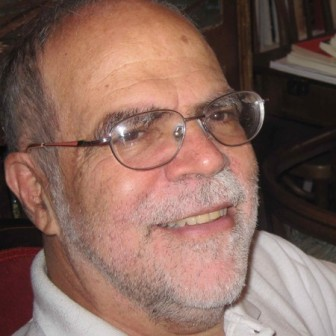Complexity in Quantum Materials: In Honor of Prof. K.A. Muller
A special issue of Condensed Matter (ISSN 2410-3896). This special issue belongs to the section "Quantum Materials".
Deadline for manuscript submissions: closed (31 January 2024) | Viewed by 1836
Special Issue Editors
Interests: synchrotron radiation research; protein fluctuations; active sites of metalloproteins; origin of life; selected molecules in prebiotic world; quantum phenomena in complex matter; quantum confinement; superstripes in complex matter; lattice complexity in transition metal oxides; high Tc superconductors; valence fluctuation materials
Special Issues, Collections and Topics in MDPI journals
Interests: ferroelectrics; antiferroelectricss; multiferroics; magnetism; phase transitions; superconductivity; nonlinear interactions
Special Issues, Collections and Topics in MDPI journals
Special Issue Information
Dear Colleagues,
This Special Issue of the Condensed Matter journal is dedicated to Complexity in Quantum Materials collecting the papers presented at the K. Alex Müller Workshop held in Erice-Sicily August 3-9, 2023, and related matter. The topics cover in advances in understanding the key role of quantum complexity and intrinsic role of heterogeneity in unconventional quantum functionalities in condensed matter made of multiple chemical and electronic components at the nanoscale. The topics cover studies on first order structural phase transitions with emerging chemical nanoscale phase separation, dynamics of non-linear systems, Rashba spin–orbit coupling at interfaces in low dimension, pseudo Jahn Teller polarons, Majorana fermions, Majorana exchange interaction, unconventional electron–phonon interaction, electronic inhomogeneities, polarons condensation and pairing, symmetry and heterogeneity, superstripes, multi-condensates, BEC-BCS crossover, topological materials, ferroelectrics, perovskites and ultracold gases artificial quantum heterostructures, artificial cuprate superlattices, multi band superconductivity, the 3D superconductivity dome in cuprates driven by strain and doping, the unconventional superconductivity dome due to Fano Feshbach resonances near Lifshitz transitions, and complexity in the physics of Li-ion batteries and room temperature superconductors.
Prof. Dr. Antonio Bianconi
Prof. Dr. Annette Bussmann-Holder
Guest Editors
Manuscript Submission Information
Manuscripts should be submitted online at www.mdpi.com by registering and logging in to this website. Once you are registered, click here to go to the submission form. Manuscripts can be submitted until the deadline. All submissions that pass pre-check are peer-reviewed. Accepted papers will be published continuously in the journal (as soon as accepted) and will be listed together on the special issue website. Research articles, review articles as well as short communications are invited. For planned papers, a title and short abstract (about 100 words) can be sent to the Editorial Office for announcement on this website.
Submitted manuscripts should not have been published previously, nor be under consideration for publication elsewhere (except conference proceedings papers). All manuscripts are thoroughly refereed through a single-blind peer-review process. A guide for authors and other relevant information for submission of manuscripts is available on the Instructions for Authors page. Condensed Matter is an international peer-reviewed open access quarterly journal published by MDPI.
Please visit the Instructions for Authors page before submitting a manuscript. The Article Processing Charge (APC) for publication in this open access journal is 1600 CHF (Swiss Francs). Submitted papers should be well formatted and use good English. Authors may use MDPI's English editing service prior to publication or during author revisions.






